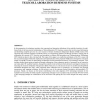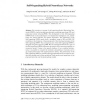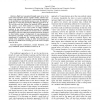500 search results - page 76 / 100 » Humans in the Process: Architectural Implications |
IADIS
2004
13 years 11 months ago
2004
In the preparation of technology transition, the contextual and alternative definitions of the usability heuristics of multifaceted role of the best practice methodology of Teleco...
MOBICOM
2010
ACM
13 years 10 months ago
2010
ACM
In this work, we study physical-layer identification of passive UHF RFID tags. We collect signals from a population of 70 tags using a purpose-built reader and we analyze time dom...
APIN
2006
13 years 10 months ago
2006
Biologists are building increasingly complex models and simulations of cells and other biological entities, and are looking at alternatives to traditional representations. Making ...
ICCS
2003
Springer
14 years 3 months ago
2003
Springer
Abstract. We introduce a concept of self-organizing Hybrid Neurofuzzy Networks (HNFN), a hybrid modeling architecture combining neurofuzzy (NF) and polynomial neural networks(PNN)....
IAT
2009
IEEE
14 years 4 months ago
2009
IEEE
—High level conceptual thought seems to be at the basis of the impressive human cognitive ability. Classical topdown (Logic based) and bottom-up (Connectionist) approaches to the...



